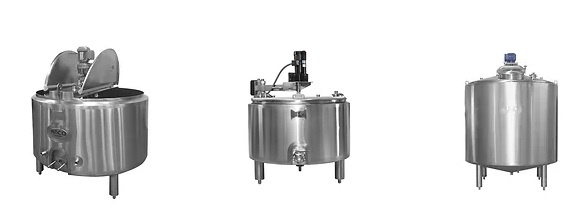A stainless steel mixing tank plays a pivotal role in the food processing sector, adept at flawlessly blending ingredients. Yet, with time, these tanks can amass tough residues, posing a risk to product quality and safety if inadequately cleaned. Embracing an effective cleaning method is crucial to upholding hygiene standards and enhancing production efficiency.
Preliminary evaluation
Start by evaluating the state of the mixing tank. Eliminate any remaining product or particles by hand. Inspect the interior surfaces of the tank for any observable residue or accumulation.
Preparation
Thoroughly drain the tank and disconnect it from any power outlets. Confirm that all valves, nozzles, and openings are reachable for the cleaning process.
Rinse with water
Utilize a high-pressure hose or water jet to flush the inside of the tank, aiming to eliminate loose particles and initial residues. This action aids in loosening and displacing dirt and contaminants.
Detergent application
Administer a food-safe detergent or cleaning solution onto the inner walls of the tank. Verify its compatibility with stainless steel and its safety for contact with food. Let it rest for the recommended duration according to the product instructions.
Industrial cleaners
An immersion parts washer with agitation is crafted to clean intricate components. Its stirring motion assists in removing tough residues from inaccessible spots. Immerse any detachable parts into the washer filled with the cleaning solution.
The immersion parts washer includes heating elements to maintain the cleaning solution at an elevated temperature, facilitating more effective removal of contaminants and residues from the parts being cleaned. The multiple stations in a multi-station heated parts washer allow for efficient and sequential cleaning processes, optimizing productivity in industrial cleaning applications by accommodating multiple parts or components at the same time.
Scrubbing and brushing
For sections needing further cleaning, utilize soft brushes or scrubbers to delicately eliminate any remaining residues. Refrain from using abrasive materials that might cause scratches on the stainless steel surface.
Rinse thoroughly
Following the cleaning process, flush the tank and its parts with fresh, drinkable water to eliminate any traces of detergent or cleaning solution. Confirm the thorough removal of all cleaning agents.
Sanitization
For the tank's protection against harmful microorganisms, sanitize it using a food-grade sanitizer. Adhere to the manufacturer's guidelines for correct dilution and duration of contact.
Summary
Stainless mixing tanks tend to accumulate residues, requiring significant manual effort for cleaning. Industrial cleaning systems possess the ideal cleaning mechanism to eliminate all dirt effectively.


No comments yet